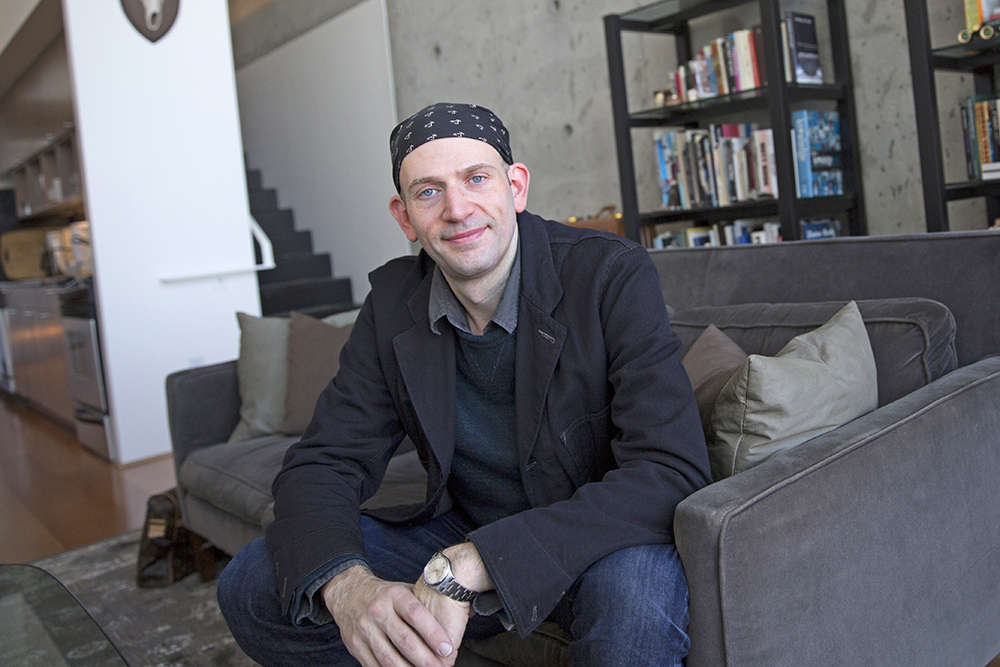Paul Dillinger, BFA ’94, can’t leave well enough alone. And that’s a good thing. When Dillinger returned to Washington University in 2010 to teach fashion design as the Louis D. Beaumont Artist-in-Residence in the Sam Fox School of Design & Visual Arts, he had come off a 16-year stretch as a designer for several major labels in New York City. The experience had left him feeling decidedly pessimistic about the race to the bottom in quality and price that seemed to dominate the industry, and the long-term consequences for the environment and the well-being of garment workers. The cotton used to manufacture textiles, for example, consumes massive amounts of water and insecticides. And many apparel companies keep prices low by reducing quality and depressing wages, leading to the creation of disposable fashion built on the backs of poorly paid workers.
Back in St. Louis, however, Dillinger was struck by the university’s shift toward sustainability. “There had been this subtle but wonderful change in the environment itself,” he says, pointing to the absence of plastic water bottles and the appearance of garbage bins clearly labeled with the word “landfill.”
“Durability is fundamentally the most important sustainability feature that designers can build into their garments.”
Paul Dillinger
Dillinger realized that his own students, however, weren’t necessarily aware of the impact that their design decisions could have on the environment or on the lives of factory workers in the developing world. So he began trying to help them understand the downstream effects of their choices — for example, by having them put the items they created in his denim-design course into the washer and dryer to see how they held up. “Durability,” Dillinger says, “is fundamentally the most important sustainability feature that designers can build into their garments.”
When Dillinger received an offer to join Levi Strauss and Co. in 2011 as senior director of global design for the clothing giant’s Dockers line, he brought that sustainability-oriented mindset with him. It was a good fit: Durability has been central to the Levi’s brand for more than a century. The company also has shown a strong commitment to environmental sustainability and fair labor practices, implementing programs designed to conserve resources (e.g., encouraging cotton farmers to use less water and pesticides, and manufacturing jeans from a combination of cotton fiber and plastic from recycled bottles) and safeguard the rights of workers — including their right to a safe workplace and a living wage.
Once again, however, Dillinger saw room for improvement. On the one hand, he wanted to tie all of the company’s separate sustainability initiatives together. On the other, he wanted to get designers more involved in making sustainable decisions from the very beginning of the design process. Or as Dillinger himself puts it: “Rather than cleaning up a mess, wouldn’t it be better not to make the mess?”
That kind of thinking, which Dillinger further pursued as a First Movers Fellow in the Business and Society Program at the nonprofit Aspen Institute, led to the development of what he calls “one of the most holistically sustainable product assortments ever made”: Wellthread, a line of premium khakis, T-shirts and jackets.
Everything about Wellthread was designed with sustainability in mind. Not only are the garments themselves made with easily recyclable fibers, energy-conserving dyes and reinforced components for extra durability, they also are exclusively manufactured in factories that support programs to improve workers’ lives by investing in community development projects.
Recently promoted to vice president, head of Global Product Innovation and Premium Design for the entire company, Dillinger wants to make sustainable thinking integral to everything Levi’s does. The key, he believes, is to allow designers to make the right decisions — ones that involve the most sustainable choices — whenever there are decisions to be made.
